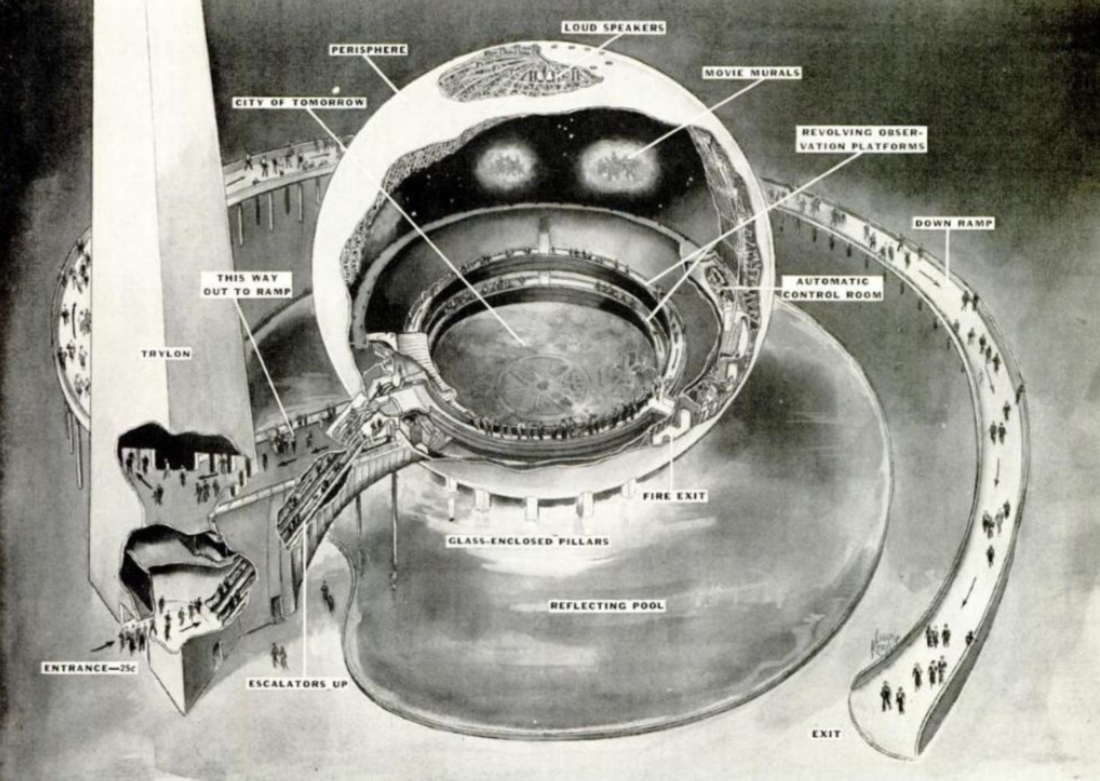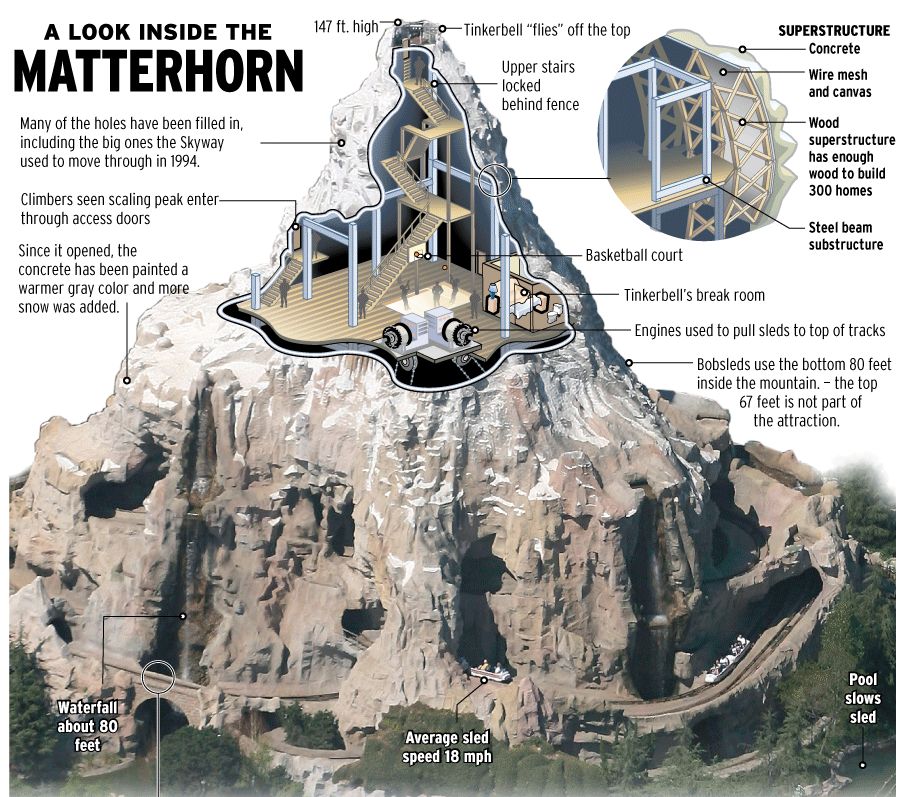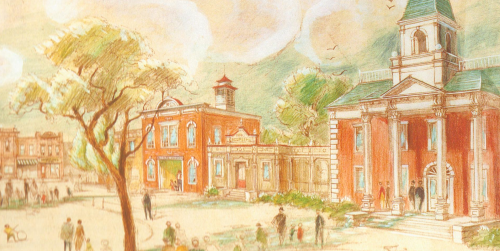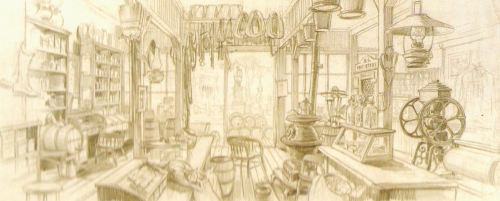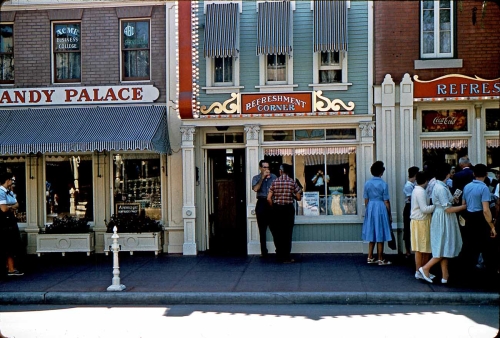
Forced perspective is one of those common photographic illusions. Let’s say you go to the Leaning Tower of Pisa and position your spouse so that he/she is pretending to hold up the tower with their hand. That is a type of forced perspective.
But another way that forced perspective is used is to give objects and buildings the illusion of height.
Our brains already know that as object recede in the distance, they get smaller. So, what forced perspective does is preempt that by making those faraway objects even smaller.
Main Street Forced Perspective
Disneyland’s Main Street has long been regarded as the beating heart of the theme park–important, sanctified, untouchable. Main Street’s spiritual origins are Walt Disney’s hometown of Marceline, Missouri. Designer Harper Goff reportedly used his birthplace of Ft. Collins, Colorado as a design inspiration for the early 20th century storefronts found on the Disneyland Main Street.
Long-time historian of faded and disappeared Disney attractions Werner Weiss visited Marceline in 2010 and found a few of the old buildings standing, notably the Zurcher Building and the Allen Hotel. In a weird, ironic twist, the fake has now influenced the real, with Marceline having renamed its main street “Main Street USA,” after Disneyland’s own Main Street USA.
On Disneyland’s Main Street, forced perspective means that each story farther up has smaller windows, smaller awnings, smaller cornices, and so on.
It’s not a complete illusion. It never is. But it does trick you subconscious mind at first glance.
Matterhorn’s Forced Perspective
At the Matterhorn, larger trees are placed lower down. Farther up, the trees decrease in size. Up to the “treeline” of the Matterhorn, two foot pinion trees from Arizon were planted. This makes the 147-foot mountain look–if not 14,000 feet tall–at least something bigger than 147 feet.
